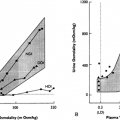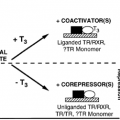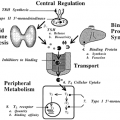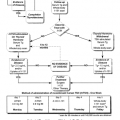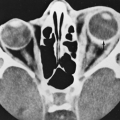GROWTH HORMONE HYPERSECRETION
Transsphenoidal surgery remains the treatment of choice for growth hormone–secreting adenomas (see Chap. 23). The overall rate of cure (defined as serum growth hormone levels of <5 ng/mL) is ˜68% (88% of microadenomas and 59% of macroadenomas).38 Approximately 75% of patients who undergo conventional radiation therapy eventually achieve normalization of serum growth hormone levels over several years (see Chap. 22). The cure rate with proton beam irradiation of tumors without extrasellar extension approaches 95%. Medical therapy has generally been reserved for those patients who refuse surgery or radiation therapy or in whom these treatment modalities have been unsuccessful as well as for those patients awaiting the full effects of irradiation. Pretreatment with somatostatin analogs may improve surgical outcomes.39 In patients with acromegaly secondary to paraneoplastic (“ectopic”) growth hormone–releasing hormone secretion (see Chap. 12 and Chap. 219), removal of the tumor secreting growth hormone–releasing hormone is the treatment of choice. If this is impossible, medical treatment may be indicated.
BROMOCRIPTINE
Bromocriptine, at a dosage of 20 to 60 mg per day, is effective in many patients with acromegaly. At this dosage level, growth hormone levels are suppressed by more than half in ˜70% of patients, but normalization is observed in <25%.40,41 Symptomatic improvement (decreased sweating, decreased softtissue swelling, improvement of sexual functioning, and decreased joint swelling) and an improvement in glucose tolerance are noted in 80% to 90% of patients.40,41 This discrepancy between growth hormone reduction and clinical improvement has been attributed to changes in the form of growth hormone secreted. Most authors recommend the use of insulin-like growth factor-I (IGF-I; also known as somatomedin C), rather than multiple determinations of growth hormone levels, to monitor therapy. In a few patients, a decrease in tumor size was observed. As with hyperprolactinemia, other dopamine agonists also appear to be effective in the treatment of acromegaly.42,43
Stay updated, free articles. Join our Telegram channel

Full access? Get Clinical Tree


